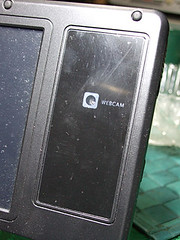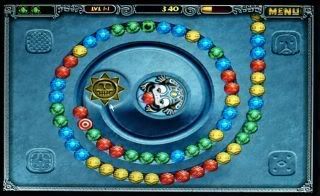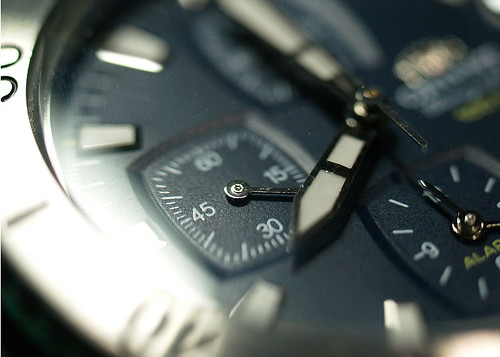Being the gadget freak that I am, I really wanted to cash in on this mobile internet revolution. But how to do it without breaking the bank? Smart phones, though truly portable and useful are just too expensive (at the time of this writing anyway). The next option would have been the iPod Touch, small and portable it would've been perfect. What held me back though was the presence of my current iPod, the 1st Gen Nano. Given to me by my father 3 years ago, it still works great and serves me well. I wasn't really in the market for a new iPod.
Then a co-worker introduced me to a whole new class of gadgets which hitherto were unknown to yours truly: the netbooks, also called ultra mobile personal computer or UMPC for short. Liliputian in size, these netbooks aren't dumbed down PCs or tablets, these are full fledged personal computers using the exact same operating system or OS of their larger brethren. In short, they were very small laptops. And the best part, a lot of these netbooks sell for less than PHP10,000 (February 2009 prices). Cheaper than a mid-tier mobile phone or a PSP!
After considering several models like the Blue H1 I finally settled for the Astone UMPC seen here with my mobile phone to provide scale.

I won't go into a highly technical description of the Astone UMPC. For the nuts and bolts aspect of the Astone, check out it's product website here.
So, why so cheap? Some credit the use of a non-Intel processor: the Via C7-M. Incidentally, the 2 netbooks to breach the less than PHP10,000 mark, the Blue H1 and Astone, use this processor.

Aside from helping to bring the price down, it has also reputed that the Via processor also uses far less power than it's Intel counterpart, which directly translates into longer battery life.
The Astone is a fairly simple netbook. Mine is currently running on Windows XP, Service Pack 2 and everything works as it should. It is WiFi-capable and also sports a wired LAN option. On its right side are 2 USB ports, an ethernet port, exhaust vent and a mic and earphone inputs.

Although it has a built-in mic I've noticed that for "best results" it's sometimes best to use an external one.
The left side finds a DVI port, even more exhaust vents and an SD/MMC-Sony Memorystick card reader. Too bad it doesn't sport a CF card reader. That would've proven handy for us DSLR users. Fortunately, this is nothing an external card reader won't fix.

Another added bonus is the Astone's interchangeable module slot on the right side of the screen. Which theoretically at least could be kitted out with anything from a GPS unit to a bluetooth phone. The default device is a webcam, which I may add works quite well.

Unfortunately, as of press time, no other devices (BT phone, GPS, etc.) can be had. So for now you'll have to make do with the webcam. Speaking of bluetooth, the built-in bluetooth also works quite well. I use to sync my Sony Ericsson K530i with the freeware MyPhoneExplorer . Absolutely sweet, you can send SMS, transfer files and even answer calls through your Astone. Sure you could get a bluetooth dongle from CDr-King but trust me, it won't work. My desktop has one and although you can transfer files, you can forget about answering/sending SMS. It's not going to happen.
The final layer of icing on the Astone cake: it's touchscreen capability. Quite a handy utility given the miniscule trackpad located in front of the keyboard. Caucasians with their oversized fingers will probably find the trackpad next to impossible to use. Enter the Astone's stylus. Point and clicking was never this easy. For best results though you should use a bluetooth mouse or one of those which sport a retractable cord.
I find Surfing the net with the Astone to be an adequate experience. It's no great shakes given its 800 x 480 default screen size but it's definitely better than squinting and scrolling on an iPhone or iPod Touch.

Gaming, though no great shakes is passable with the Astone. Classic time wasters like Zuma work fine.

However, you can forget about playing Left4Dead or any hardware intensive games on the Astone. It's not what this gadget was built for so quite predictably, it's not going to work. Older games like Counterstrike and Starcraft work flawlessly. I've even read that some users playing Warcraft III and DOTA on theirs.
So should you rush to your nearest electronic gadget store and grab an Astone UMPC? Not so fast. This device is not without its flaws and there are some really notable ones. First and foremost is it's Via Processor. It may be inexpensive and some say even perfect for a netbook (given it's low power consumption) but it is never going to come close to an Intel-based processor in performance. Maybe in the future Via can come up with something at par with an Intel, but not in this current form. It can be slow.
Another drawback to the Astone is its rather slow hard drive speed. At 3600rpm, you won't be breaking any speed records with this one. Some find the slowness of the hard drive simply infuriating. But then again, these folks are probably expecting desktop-level performance. If you are one of them, then stay away from the Astone and save yourselves from a world of hurt and aggravation.
It's best to know what you're getting into with an Astone UMPC, and that is an ultra portable bluetooth-enabled, touchscreen surf and chat machine. It's what this was built for, it's what it does best.








